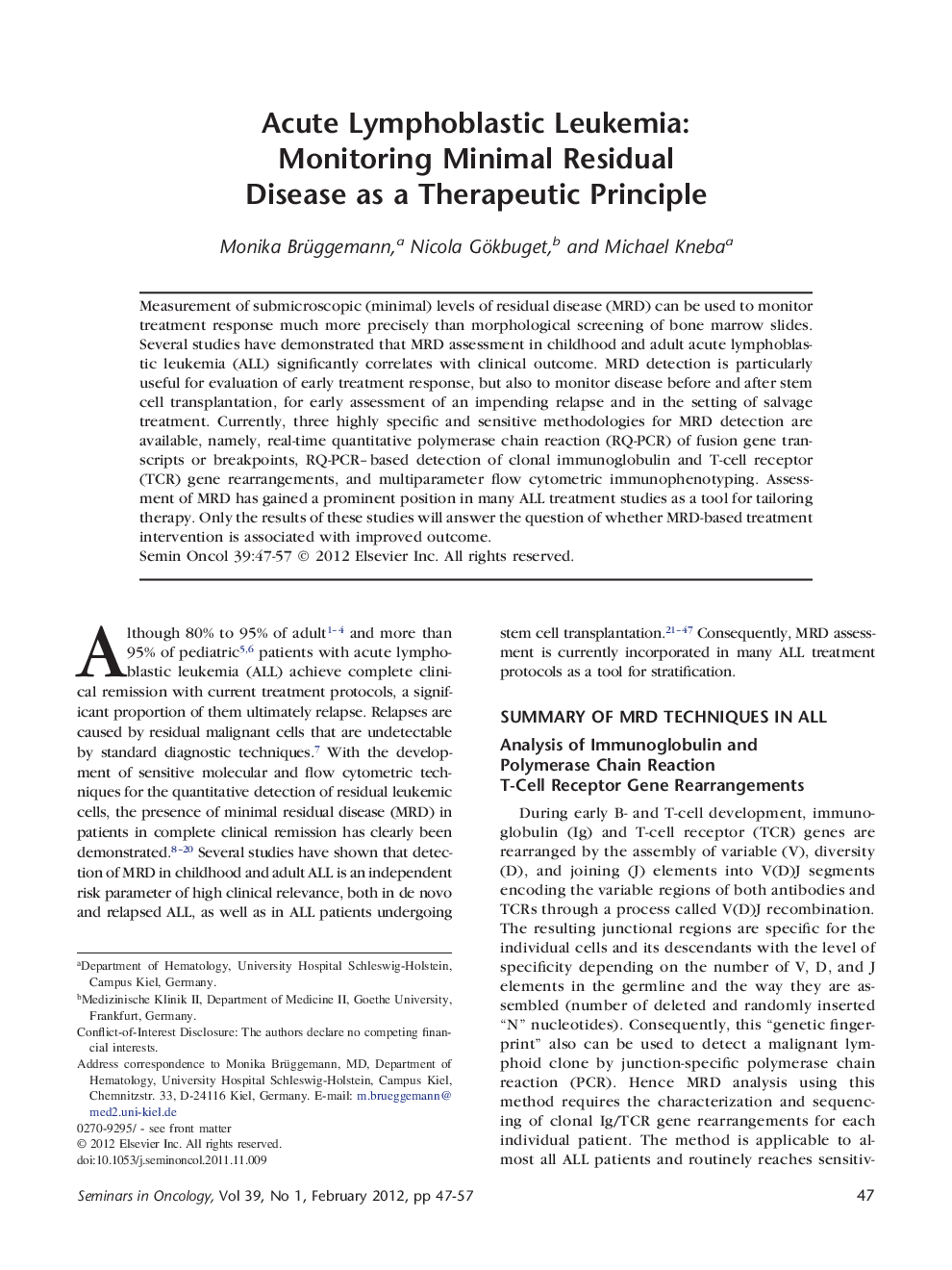| کد مقاله | کد نشریه | سال انتشار | مقاله انگلیسی | نسخه تمام متن |
|---|---|---|---|---|
| 2162310 | 1091245 | 2012 | 11 صفحه PDF | دانلود رایگان |
عنوان انگلیسی مقاله ISI
Acute Lymphoblastic Leukemia: Monitoring Minimal Residual Disease as a Therapeutic Principle
دانلود مقاله + سفارش ترجمه
دانلود مقاله ISI انگلیسی
رایگان برای ایرانیان
موضوعات مرتبط
علوم زیستی و بیوفناوری
بیوشیمی، ژنتیک و زیست شناسی مولکولی
تحقیقات سرطان
پیش نمایش صفحه اول مقاله

چکیده انگلیسی
Measurement of submicroscopic (minimal) levels of residual disease (MRD) can be used to monitor treatment response much more precisely than morphological screening of bone marrow slides. Several studies have demonstrated that MRD assessment in childhood and adult acute lymphoblastic leukemia (ALL) significantly correlates with clinical outcome. MRD detection is particularly useful for evaluation of early treatment response, but also to monitor disease before and after stem cell transplantation, for early assessment of an impending relapse and in the setting of salvage treatment. Currently, three highly specific and sensitive methodologies for MRD detection are available, namely, real-time quantitative polymerase chain reaction (RQ-PCR) of fusion gene transcripts or breakpoints, RQ-PCR-based detection of clonal immunoglobulin and T-cell receptor (TCR) gene rearrangements, and multiparameter flow cytometric immunophenotyping. Assessment of MRD has gained a prominent position in many ALL treatment studies as a tool for tailoring therapy. Only the results of these studies will answer the question of whether MRD-based treatment intervention is associated with improved outcome.
ناشر
Database: Elsevier - ScienceDirect (ساینس دایرکت)
Journal: Seminars in Oncology - Volume 39, Issue 1, February 2012, Pages 47-57
Journal: Seminars in Oncology - Volume 39, Issue 1, February 2012, Pages 47-57
نویسندگان
Monika Brüggemann, Nicola Gökbuget, Michael Kneba,